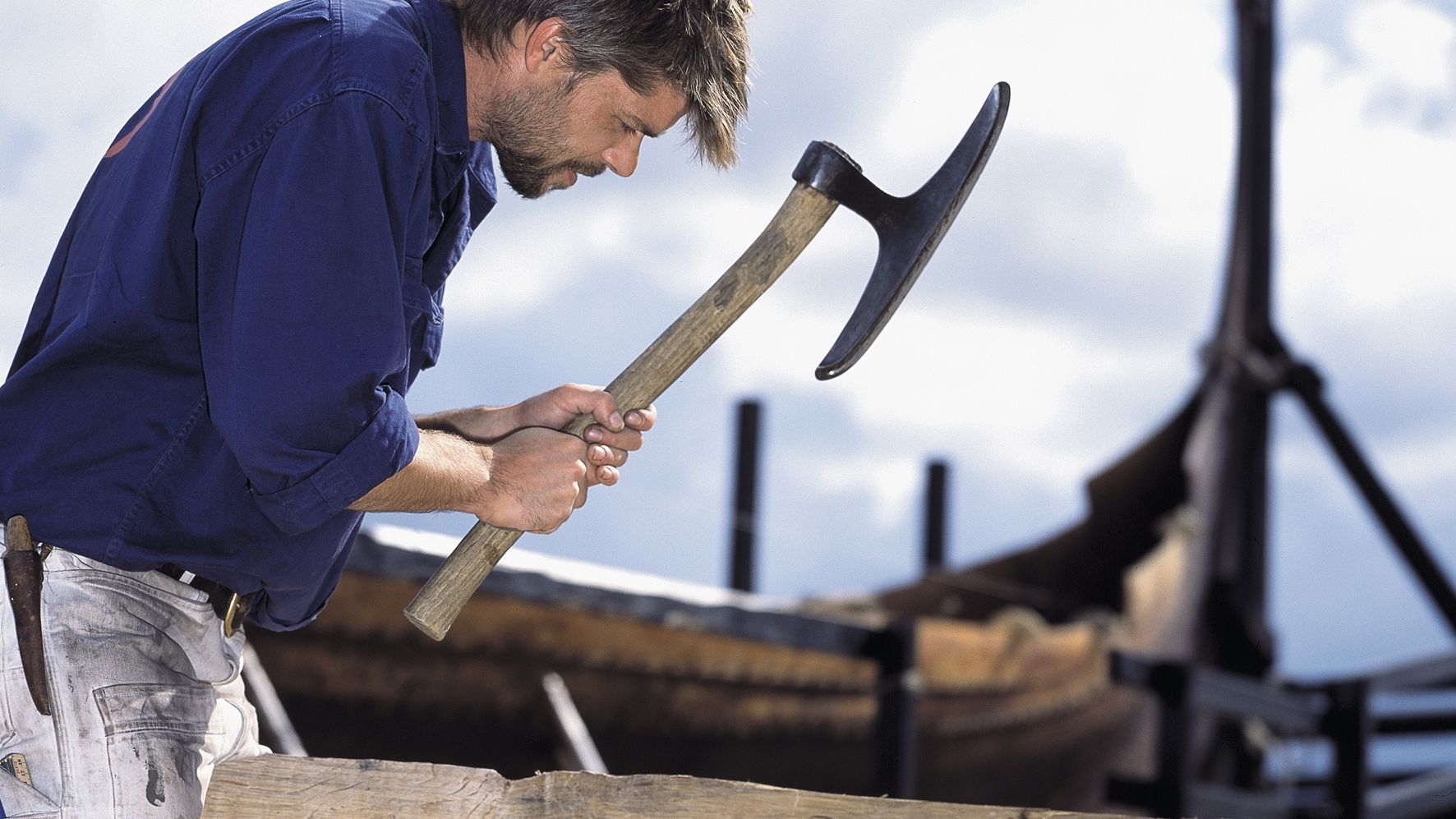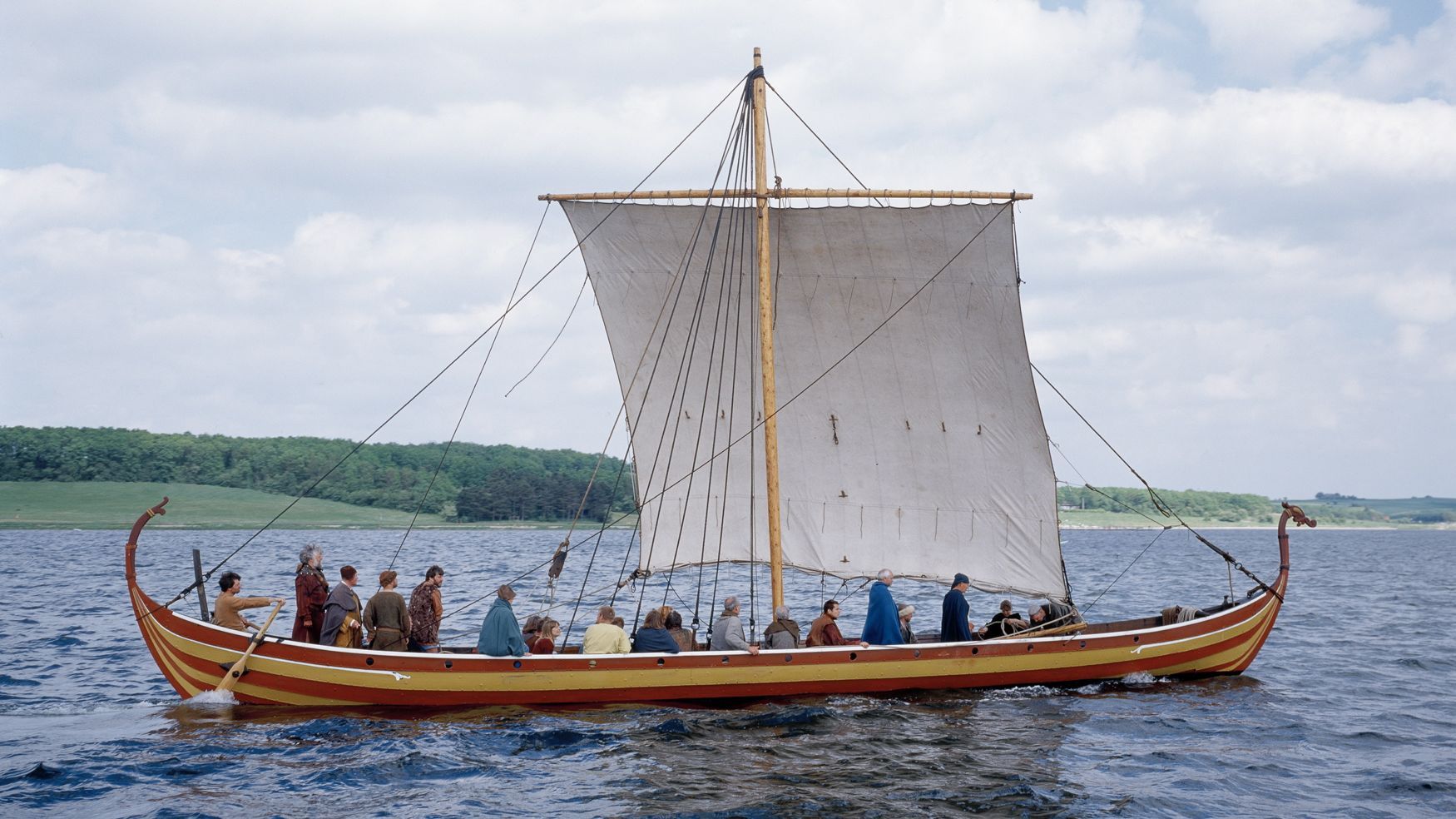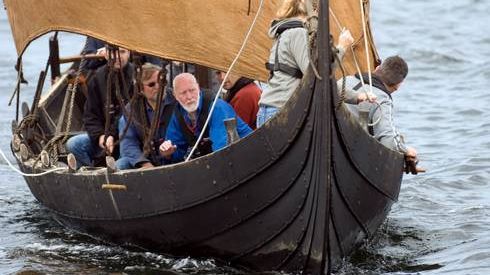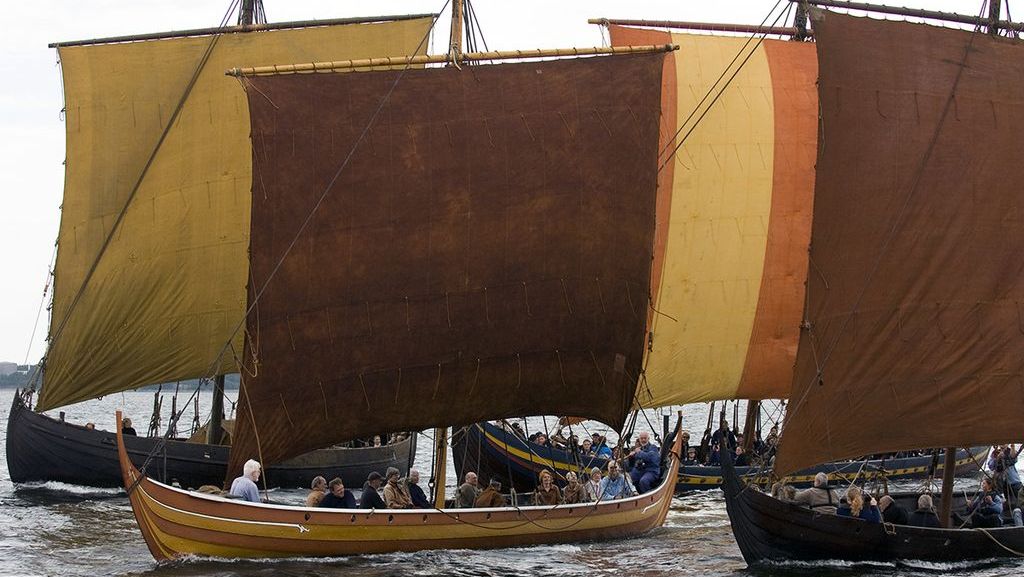Roar Ege 1982 - 1984 and Estrid Byrding 2017 - 2023
The latest reconstruction of Skuldelev 3
In 2017 we began work on our second reconstruction of Skuldelev 3 and a new project – Skuldelev 3 Revisted – began.
This reconstruction is not, however, an exact copy of Roar Ege. The experimental archaeological methods practised at the Museum have been greatly refined in the years since the construction of Roar Ege began. We can now look at the original ship find from a completely different perspective: one of many years collective experience in the interpretation and reconstruction of archaeological ships, with all the insight and inherent understanding that affords.
The reconstruction process began therefore from scratch, starting with a re-examination of the surviving timbers of Skuldelev 3 as well as the 1:1 documentation carried out at the time of its excavation. A new 1:10 scale-model was produced, which formed the basis for the full-scale reconstruction.
The full-scale reconstruction process took place at the Museum boatyard from 2017 – 2022 and the new reconstruction, Estrid Byrding, was launched on 7 May, 2022.
The first reconstruction
In 1982 Roar Ege, the reconstruction of the small trading ship was built.
The ship is the best preserved of the five Skuldelev ships with 75 % of the hull intact. Aldready during the excavation, the dream of recreating Skuldelev 3 arose and it was the first reconstruction to be built in the Viking Ship Museum's Boatyard.
To avoid preconceived attitudes towards ship design and construction methods, the museum did not employ professional boatbuilders. The construction team had to be open to a shipbuilding tradition more than 1,000 years old. The museum therefore engaged a group of young people who, two years earlier, built Imme Skinfaxe, a 9:10 scale reconstruction of Skuldelev 3.
The building of Roar Ege was carefully documented. All the details were discussed, and for each decision, a memorandum was drawn up with descriptions, drawings and references. When the reconstruction was launched it had consummed 20,000 working hours - the rope work and hand-wowen wool sail alone accounted for 5000 working hours.
The museum's building process
When reconstructing the Skuldelev ships the museum faces several challenges. One of the most difficult is to explain how the Vikings, unlike us, built by eye, using rules-of-thumb that were passed down. We have chosen to build reconstructions that are as close to the original ships as possible. Consequently, we use models and drawings while examining the Viking building tradition.
Roar Ege's contribution to experimental archaeology
After more than 30 years on the water, Roar Ege had many sea miles under its keel, including voyages to Gotland, Poland and France, as well as countless days on the seas around Denmark. The years had, however, taken their toll on the ship. Roar Ege had undergone several major phases of repair – most recently in 2014 when the stringer, many of the iron rivets and sections of the planking material were replaced. It was hoped this repair would keep Roar Ege in action for several more years but by spring 2016, the hull had deteriorated to such an extent that it was clear Roar Ege’s sailing days were over.
We are now in the process of studying the hull, in order to gain a thorough understanding of the processes of age and decay. This data will then be used to draw initial conclusions concerning the potential lifespan of the Museum’s other reconstructed Viking ships, as well as shedding light on the longevity of ships in the past.
» You can see the 1000 year old original ship in the Viking Ship Hall...



